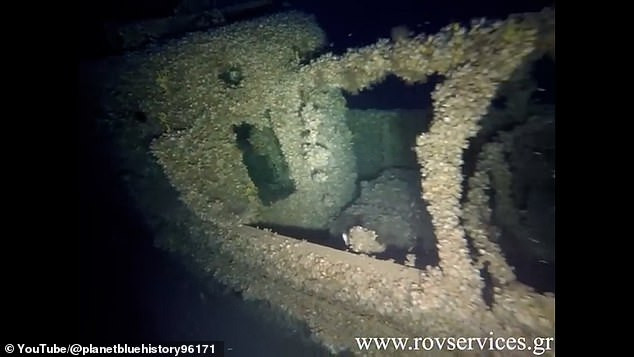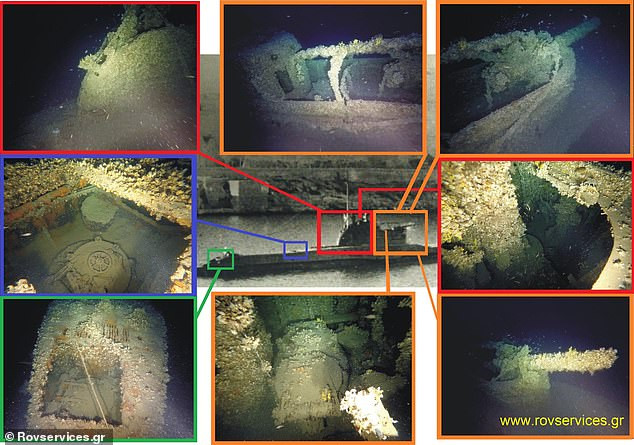While all eyes are on the Titanic’s wreckage, the tiny submarine Titan, which exploded as a result of an internal explosion, has received surprising news about the British manned submarine HMS Triumph, which disappeared more than 80 years ago: the wreckage of HMS Triumph may have finally been found. Divers seem confident that they have found the missing submarine at a depth of 203 meters in the Aegean Sea.
The approximately 85-metre submarine was serving off the coast of Greece when it disappeared without trace under mysterious circumstances in January 1942. The bodies of the 64 people who were on board at the time, all British personnel, are thought to be still inside the submarine.
Stunning video footage shows the newly discovered shipwreck, which has not yet been definitively confirmed as HMS Triumph, lying tens of kilometers off the coast of Cape Sounion. The distinctive features of the submarine’s hull and the location of the wreck led divers to conclude that it was “definitely” Triumph, but further investigation is underway.
Experienced Greek diver Kostas Thoktaridis, who first learned the story of HMS Triumph in 1998, described the self-financed mission as “the most difficult mission I’ve ever undertaken in my life”.
Searching for the submarine with his colleagues, the diver used a sonar remote-controlled vehicle (ROV) that uses sound waves to “see” the water and detect underwater objects. Equipped with cameras, the ROV then filmed disturbing images of the wreck, capturing details such as the submarine’s rusty rear, top cover, and entry holes.
Although more than 80 years have passed since its sinking and is covered with mussels and other sea creatures, the wreck appears to have been well preserved.
Thoktaridis and colleagues had previously spotted the wreckage of four submarines in Greek waters, including the 1997 HMS Perseus. Thoktaridis said, “The history of the Triumph submarine is multidimensional and unique in maritime history and is inextricably linked with the national resistance and the secret services acting in the dark days of the occupation. “The wreckage is respected because it’s a wet burial of 64 people,” he says.
The exact location of HMS Triumph will not be disclosed, due to Greek archaeological laws aimed at protecting shipwrecks from disturbance and deterioration.

The lowered visors and closed entrance holes indicate that the submarine is in a deep dive in its final moments, Thoktaridis said. Divers also spotted the wooden steering wheel, compass, and slightly raised four-inch (about 10-centimeter) cannon on the submarine’s turret.
History of HMS Triumph
HMS Triumph, a T-class submarine of the Royal Navy, was built by the British engineering firm Vickers at Barrow-in-Furness and launched in 1938.
Triumph, II. She had a successful career in the early years of World War II, and from early 1941 she sank several enemy ships in the Mediterranean. The submarine was tasked with landing a group of British agents on the Greek island of Antiparos in December of that year.
Although the agents’ mission was successful, HMS Triumph, which was supposed to take the agents on January 9, 1942, did not make it to the point of receiving. The exact reason for the sinking of the submarine is unknown and may have been lost in the pages of history. However, Thoktaridis believes the sinking was probably caused by a high-powered frontal explosion caused by a mine or torpedo.

The team also found British Mk VIII torpedoes of the same type as those carried by HMS Triumph near the wreckage. “This fact leads us to believe that Triumph fired multiple torpedoes during its final attack,” Thoktaridis said.
The Department of Defense will now liaise with relevant partners for additional information on the submarine. “Although HMS Triumph is known to be operating in the area at the time, further assessment work is ongoing to clarify the identity of the wreck,” a Royal Navy spokesperson told MailOnline.